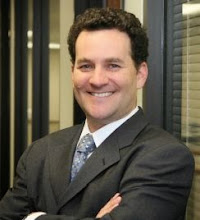People act rationally, don’t they?
One of the pillars of modern economic theory is the idea that individuals act rationally: they seek to maximize their satisfaction based on their preferences and the information available to them, in a way that changes little over time or in different contexts.
The “rational choice theory” holds that a person faced with a decision regarding money will choose the option that maximizes financial gain and minimizes losses. For example, given the choice between a gift of $50 and a gamble that offers a 75% chance of winning $100, a rational person should choose the gamble. The value or “expected utility” of the gamble equals the amount of the potential gain multiplied by its likelihood: in this case, the expected utility of the gamble is 75% of $100, or $75. Because the value of the gamble ($75) exceeds the value of the sure thing ($50), rational choice theory predicts that a rational person will choose the gamble.
In the settlement context, the rational choice theory predicts that parties will evaluate their cases the same way, based on the likelihood of the anticipated outcomes. Remember Adam from last week? Although he had a weak case, he rejected a reasonable settlement offer, took his case to trial, and -- predictably -- lost.
Adam should have evaluated his case by looking at the judgment that he was most likely to recover multiplied by the likelihood of achieving that judgment. So if he believed that he had a 10-20% chance of winning a $300,000 judgment, he should have evaluated the case as having a value of $30,000 to $60,000. If the defendant offered him a figure in this range, the rational choice theory predicts that he would accept it.
Next week, we will start looking at these cognitive errors.
In the settlement context, the rational choice theory predicts that parties will evaluate their cases the same way, based on the likelihood of the anticipated outcomes. Remember Adam from last week? Although he had a weak case, he rejected a reasonable settlement offer, took his case to trial, and -- predictably -- lost.
Adam should have evaluated his case by looking at the judgment that he was most likely to recover multiplied by the likelihood of achieving that judgment. So if he believed that he had a 10-20% chance of winning a $300,000 judgment, he should have evaluated the case as having a value of $30,000 to $60,000. If the defendant offered him a figure in this range, the rational choice theory predicts that he would accept it.
But human beings in the real world do not make such rational decisions. Kahneman and Tversky revolutionized economics by showing that a number of behavioral patterns and cognitive errors play an important role in the way that people make decisions. Understanding these cognitive errors will improve your decision-making and your results in litigation and mediation.
Next week, we will start looking at these cognitive errors.






No comments:
Post a Comment